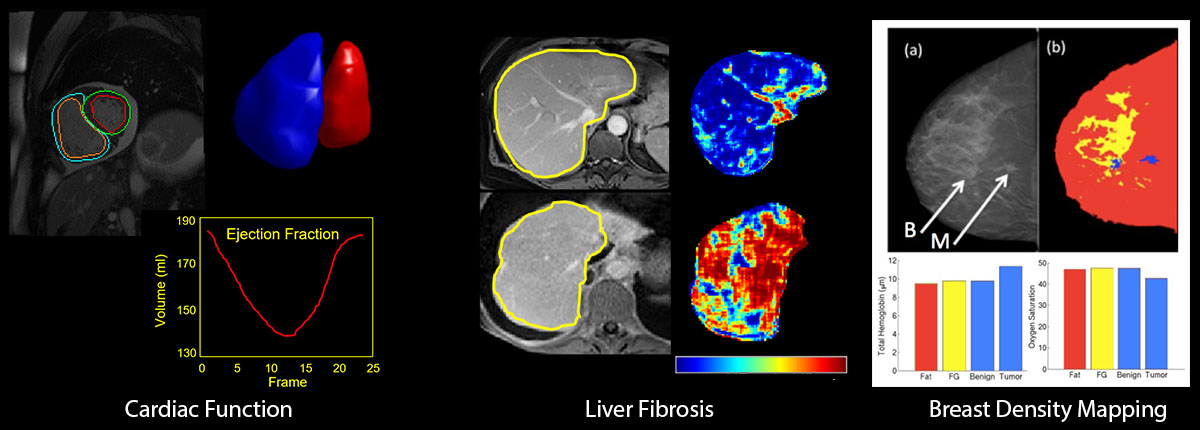Once acquired, medical images are frequently processed or analyzed by computer algorithms for purposes such as tomographic reconstruction, image correction or enhancement, and information extraction. When intended for human interpretation, these images must be displayed using appropriate visualization devices.
The Department of Radiology and Imaging Sciences conducts active research across all stages of this process—from image formation and qualitative analysis to evaluation and quantitative measurement of structures at the molecular, cellular, tissue, and organ levels.
Our overarching goal is to promote cost-effective healthcare and enhance patient outcomes through innovations in medical imaging. To achieve this, we develop, optimize, and validate advanced computational methods and data integration techniques to analyze imaging data and build clinical decision support tools that enable quantitative, personalized medicine.
Additionally, we maintain a long-standing program dedicated to display evaluation, examining how different presentation formats of complex medical images and data influence clinicians’ ability to deliver accurate and consistent diagnoses.



